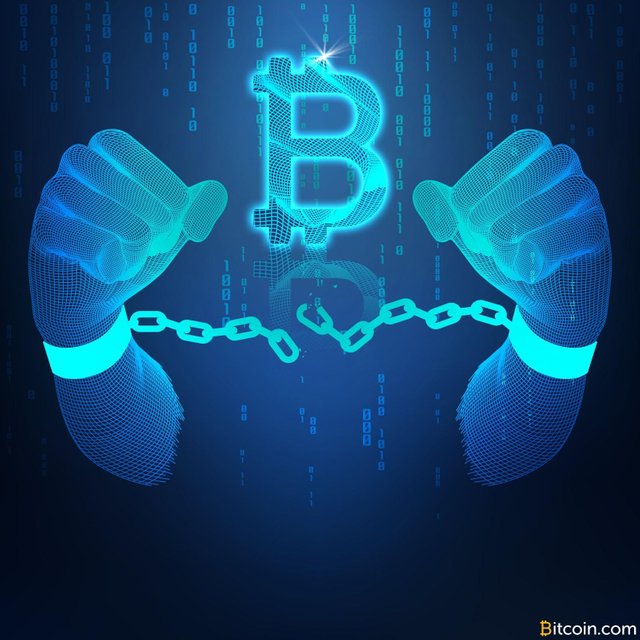The Satoshi Revolution – Chapter 2: Satoshi’s White Paper Breaks Your Economic Chains (Part 5)

The Satoshi Revolution: A Revolution of Rising Expectations.
Section 1 : The Trusted Third Party Problem
Chapter 2: Monetary Theory
by Wendy McElroy
Satoshi’s White Paper Breaks Your Economic Chains (Chapter 2, Part 5)
I think that the Internet is going to be one of the major forces for reducing the role of government. The one thing that’s missing, but that will soon be developed, is a reliable e-cash, a method whereby on the Internet you can transfer funds from A to B without A knowing B or B knowing A. The way I can take a $20 bill hand it over to you and then there’s no record of where it came from. You may get that without knowing who I am. That kind of thing will develop on the Internet and that will make it even easier for people using the Internet. Of course, it has its negative side. It means the gangsters, the people who are engaged in illegal transactions, will also have an easier way to carry on their business.
—Milton Friedman
The Nobel Prize economist predicted Bitcoin during a 1999 interview conducted by the National Taxpayers Union Foundation. Milton Friedman’s brief statement is remarkable. Within a decade, a reliable e-cash was developed. Bitcoin did and does have a profound political impact on government by shattering its monopoly on currency. Peer-to-peer transfers do not require participants to know each other, and they can be almost anonymous. Bitcoin benefits criminals, as well as peaceful individuals, in much the same manner as physical cash. The quote’s one misstep is to envision an exchange in which “there’s no record of where it came from.”
E-cash and its surrounding issues had been discussed many times before October 31, 2008 when Satoshi’s Paper, “Bitcoin: A Peer-to-Peer Electronic Cash System,” was released into the wild. Without the blockchain to enable peer-to-peer transfer, however, the emphasis was generally on how to achieve anonymity when dealing with a trusted third party. It is the blockchain that makes bitcoin remarkable because it eliminates the need for a trusted third party.
But, first, Satoshi laid the groundwork for his paper.
Context for the Concept and Coding of Bitcoin
The coding of Bitcoin began in 2007. The timing was no coincidence. The financial crisis of 2007-2008 is often viewed as the worst to occur since the Great Depression devastated the 1930s. The 2007 crisis is a cautionary tale of how dangerous it is to empower trusted third parties, and how pitbull-protective the government is of the banking system.
A collapse in the subprime mortgage industry sparked the financial crisis. Typically, a subprime mortgage is issued to a borrower with poor credit who poses a higher-than-usual default risk. To compensate the lender, the borrower pays a higher-than-usual rate of interest. Subprimes became increasingly common for several reasons. One was the use of automated underwriting software that sped up the loan process, but often bypassed the standard review of data and documents. In short, lending institutions failed in their duty to authenticate a borrower’s eligibility. Housing prices rose on a flood of artificially-loose credit. Peaking in 2006, prices then spiralled downward for years, which caused massive foreclosures in the U.S. and internationally.
The high delinquency rate, in turn, caused a devaluation of financial instruments and threatened to collapse the trusted-third-party system. On September 7, 2008, the U.S. federal government assumed the liabilities of the shaky Freddie Mac and Fannie Mae; these government-sponsored enterprises bought loans from mortgage lenders, and sold them to investors on the open market. Then, on September 15, large investment bank Lehman Brothers filed for bankruptcy. Other banks were expected to follow, including Merrill Lynch, American International Group (AIG), and the Royal Bank of Scotland. The next day, the government announced its intention to recapitalize the U.S. financial system; it would bail out the banks. AIG led the way with the government extending a loan of up to $85 billion in exchange for an 80% equity interest in AIG. On October 3, the Emergency Economic Stabilization Act of 2008 was enacted, authorizing spending of up to $700 billion to purchase distressed assets and to fund financial institutions, including foreign ones. The hierarchy of trusted third parties not only failed in its fiduciary duty but also passed-on the cost of failure to taxpayers.
Satoshi watched the bailouts unfold, as the message on the Genesis block attests: “The Times 03/Jan/2009 Chancellor on brink of second bailout for banks.” Solving the trusted third party problem must have assumed urgency to him.
Something else significant occurred in 2007. The U.S. federal government filed charges against e-Gold, Inc., which was then the leading digital currency company. The charges were money laundering and transmitting money without a license. E-gold’s owners were tried and convicted; the company was ruined and closed its e-doors.
Satoshi must have watched this situation, as well. No wonder he maintained absolute anonymity.
Another piece of groundwork for the White Paper was to invite feedback from cypher-experts via private email. On August 22, 2007, for example, Satoshi emailed famed cypherpunk Wei Dai. The subject line was “Citation of your b-money page.” Satoshi explained, “I’m getting ready to release a paper that expands on your ideas into a complete working system. Adam Back noticed the similarities and pointed me to your site. I need to find out the year of publication of your b-money page for the citation in my paper. It’ll look like: [1] W. Dai, ‘b-money’
For more details, please visit: https://news.bitcoin.com/the-satoshi-revolution-chapter-2-satoshis-white-paper-breaks-your-economic-chains-part-5/?utm_source=OneSignal%20Push&utm_medium=notification&utm_campaign=Push%20Notifications